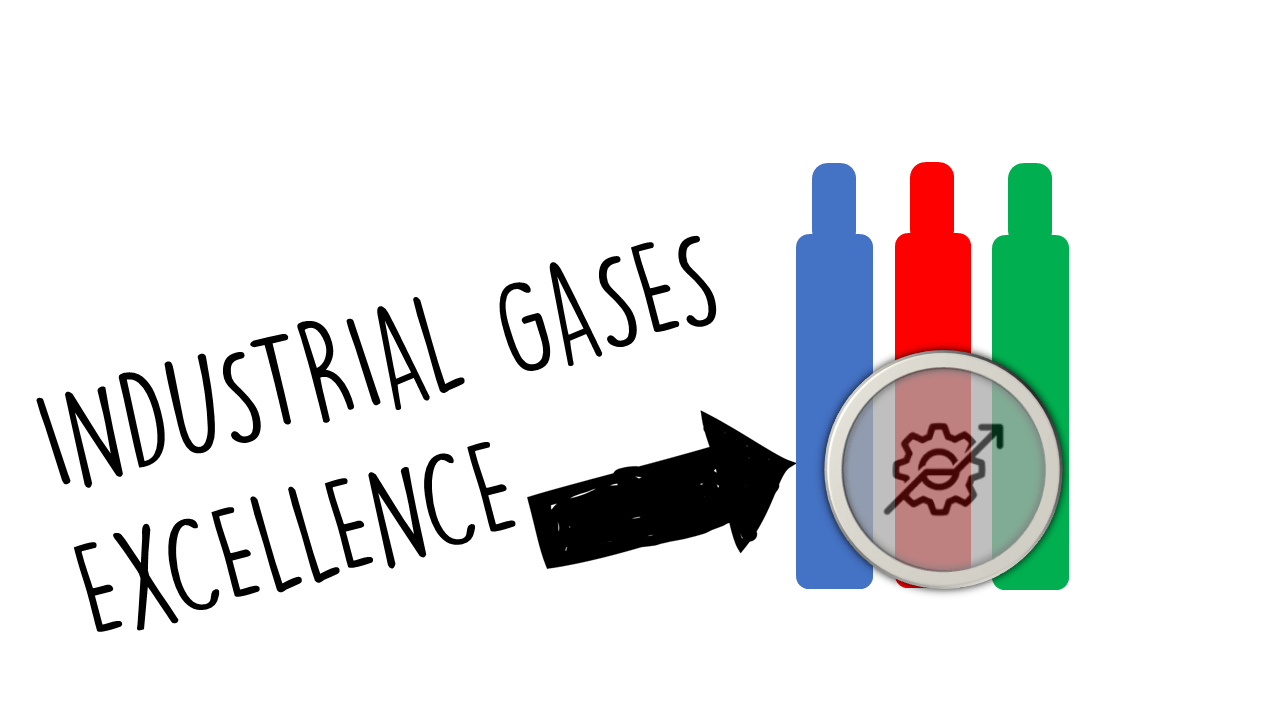**Creating a Blue Ocean Market for Industrial Gases**
**What is a Blue Ocean Market?**
A Blue Ocean Market refers to an untapped market space where competition is minimal or nonexistent. The term originates from the book “Blue Ocean Strategy” by W. Chan Kim and Renée Mauborgne, which contrasts “blue oceans” (new, uncontested market spaces) with “red oceans” (existing markets saturated with competition).
In a blue ocean, companies can innovate and create demand rather than fighting over existing customers. This approach encourages businesses to explore new opportunities, differentiate their offerings, and ultimately achieve higher profitability.
**Why Create a Blue Ocean Market?**
Creating a Blue Ocean Market offers several advantages:
1. **Reduced Competition:** By venturing into uncharted territories, businesses can avoid the fierce competition that characterizes red oceans. This allows for greater pricing power and improved margins.
2. **Innovation Opportunities:** A blue ocean encourages innovation, as companies are not confined by existing industry norms or customer expectations. This can lead to groundbreaking products or services that redefine market standards.
3. **Customer Loyalty:** By addressing unmet needs or creating entirely new demand, businesses can foster strong customer loyalty. Satisfied customers are more likely to become repeat buyers and brand advocates.
4. **Sustainable Growth:** A blue ocean strategy often leads to sustainable growth as companies establish themselves in new markets before competitors can catch up.
5. **Enhanced Brand Image:** Companies that successfully create blue oceans are often viewed as leaders in innovation, enhancing their brand image and attracting top talent.
**How to Create a Blue Ocean Market?**
Creating a Blue Ocean Market involves several strategic steps:
1. **Identify Unmet Needs:** Conduct thorough market research to identify gaps in the current offerings of industrial gases. Look for pain points that customers face or areas where existing products fall short.
2. **Innovate Offerings:** Develop innovative solutions that address these unmet needs. This could involve creating new types of industrial gases, improving delivery methods, or offering value-added services such as customized gas mixtures or on-site support.
3. **Reconstruct Market Boundaries:** Challenge the conventional boundaries of the industrial gas market by exploring adjacent industries or applications where your products could be beneficial.
4. **Focus on Value Innovation:** Strive for value innovation by simultaneously pursuing differentiation and low cost. This means creating products that offer unique benefits while also being cost-effective for customers.
5. **Engage Stakeholders:** Collaborate with stakeholders—including suppliers, customers, and industry experts—to gather insights and refine your offerings based on real-world feedback.
**Get Started to Create a Blue Ocean Market in 3 Steps:**
1. **Conduct Comprehensive Research:** – Analyze current market trends within the industrial gases sector. – Identify customer pain points through surveys, interviews, and focus groups. – Study competitors to understand their strengths and weaknesses.
2. **Develop Innovative Solutions:** – Brainstorm potential solutions that address identified gaps. – Prototype your ideas and test them with target customers. – Refine your offerings based on feedback until you have a viable product or service.
3. **Launch Strategically:** – Create a marketing plan that highlights the unique value proposition of your offering. – Utilize digital marketing channels to reach potential customers effectively. – Monitor performance metrics post-launch to adjust strategies as needed.
**Successful 10 Examples from the Industrial Gases Sector:**
1. **Air Products & Chemicals Inc.:** Innovated in hydrogen production technologies for cleaner energy applications.
2. **Linde plc:** Developed specialized gas mixtures for healthcare applications, addressing specific patient needs.
3. **Praxair (now part of Linde):** Created tailored gas solutions for food preservation, enhancing shelf life while reducing waste.
4. **Messer Group:** Focused on sustainable practices by developing eco-friendly gas production methods.
5. **Air Liquide:** Invested in carbon capture technologies to provide cleaner industrial gas solutions.
6. **Matheson Tri-Gas:** Offered customized gas delivery systems for semiconductor manufacturing processes.
7. **Nexair LLC:** Launched an online platform for easy ordering of industrial gases tailored for small businesses.
8. **BASF SE:** Developed specialty gases for agricultural applications aimed at improving crop yields sustainably.
9. **CryoGas LLC:** Pioneered cryogenic technology for efficient storage and transportation of industrial gases.
10. **Gulf Cryo:** Expanded into emerging markets in the Middle East by providing localized gas solutions tailored to regional industries.
**Conclusion**
Creating a Blue Ocean Market within the industrial gases sector presents an exciting opportunity for businesses willing to innovate and explore uncharted territories.
By identifying unmet needs, developing innovative solutions, and strategically launching these offerings, companies can carve out their own niche in an otherwise competitive landscape.
The examples provided illustrate how various organizations have successfully navigated this journey, demonstrating that with the right approach, it is possible to thrive in a blue ocean while delivering significant value to customers and stakeholders alike.





